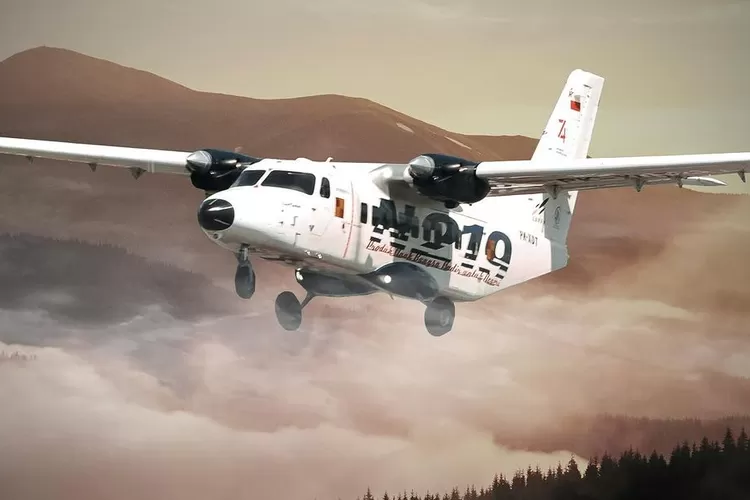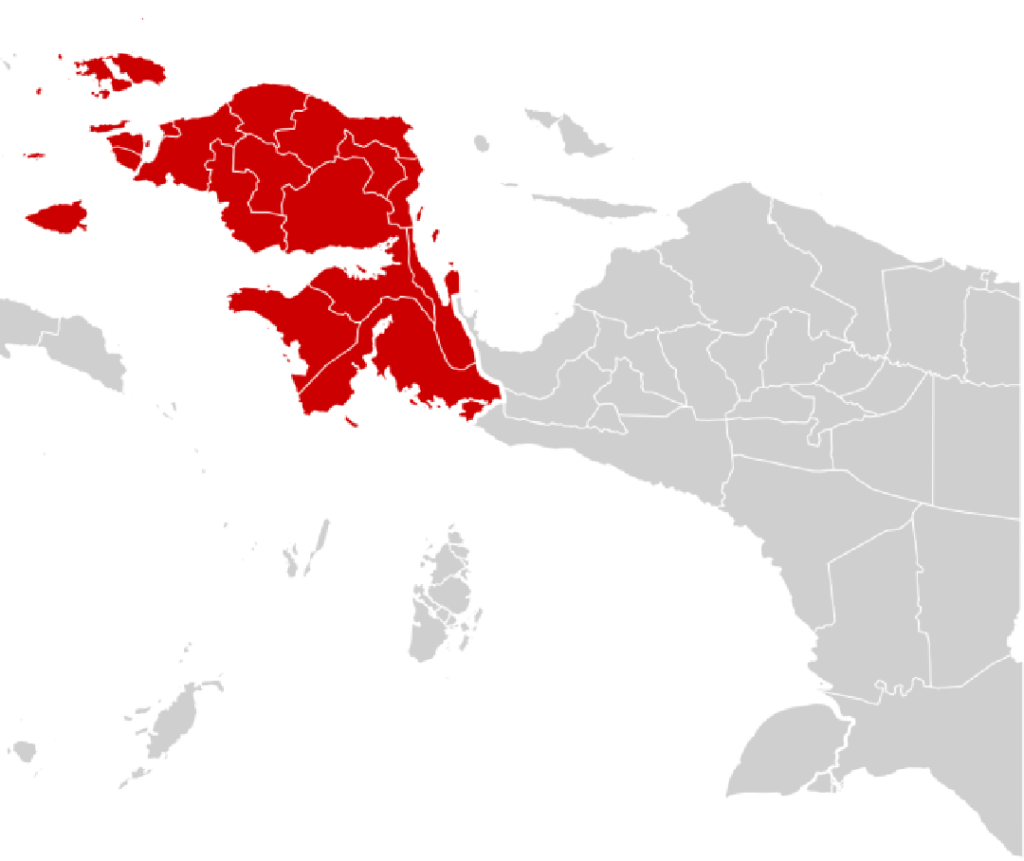High in the cloud-laced highlands of Papua Pegunungan, where the terrain often thwarts wheels and walking is still the norm for many, an ambitious dream has begun to unfold—one carried not on land, but in the air.
It arrives with the unmistakable hum of twin turboprops cutting through the valley fog. The plane—sleek, compact, and proudly homegrown—is the N219, a product of PT Dirgantara Indonesia (PTDI) and now the centerpiece of a bold collaboration with the Papua Pegunungan Provincial Government and Bappenas, Indonesia’s national development planning agency.
To those watching from the mountainsides, the N219 is not just another aircraft. It is a lifeline. It is, quite literally, a new road in the sky.
Where Roads End, the Sky Begins
The story begins with a long-standing dilemma. The Papua Pegunungan region, encompassing remote regencies like Lanny Jaya, Yahukimo, and Pegunungan Bintang, has long suffered from one of Indonesia’s most acute logistics crises. The lack of paved roads—exacerbated by steep topography and unpredictable weather—has left communities isolated and dependent on costly and infrequent small aircraft to deliver food, fuel, medical supplies, and passengers.
In some places, simple goods like rice or cement can cost up to five times more than they do in coastal cities. Mothers trek for days to reach basic health services. Young people miss opportunities for education and work simply because no reliable transport exists. And in an economy that moves with people and goods, the region has been stalled in place.
Faced with this reality, the new Governor of Papua Pegunungan, John Tabo, made connectivity a cornerstone of his leadership. And in mid-2025, that vision took a major leap forward with the formal collaboration between PTDI, the provincial government, and Bappenas.
The Aircraft Built for the Impossible
At the center of this partnership is the N219, a light, twin-engine aircraft with a short take-off and landing (STOL) capability that makes it ideal for Papua’s many unpaved, sloped, and short airstrips. Designed and manufactured by PT Dirgantara Indonesia in Bandung, the N219 is Indonesia’s pride: a domestically built aircraft that reflects both national technological ambition and local necessity.
The plane can carry up to 19 passengers or 2.3 tons of cargo, operate in extremely rugged environments, and fly to airfields inaccessible to larger planes. It’s not just about speed or range—it’s about precision. It can land on strips less than 800 meters long, often with uneven surfaces and limited ground support. In many ways, the N219 was made for places like Papua Pegunungan. And now, it’s finally coming home.
A Strategic Agreement with National Reach
The formal cooperation began with a Memorandum of Understanding signed in June 2025 between PTDI and the Papua Pegunungan government, with support from KKIP (the Indonesian Defense Industry Policy Committee) and Bappenas. The agreement covers not only aircraft operation but also logistics management, pilot training, and support services.
Crucially, Bappenas has been involved in exploring funding models and subsidy mechanisms that will allow the aircraft to operate sustainably—something essential in a region where market-driven aviation often collapses under high costs and low demand density.
Governor Tabo emphasized that the N219 is not just a transport solution but a development strategy. “If we can connect our people—physically—we can unlock every other form of progress,” he said at a press conference in Wamena. “Access leads to education. Access brings down food prices. Access reduces maternal deaths. This is what the N219 gives us.”
Voices from the Ground: What Connectivity Really Means
In a small village outside Wamena, Maria Yesaya, a health worker, recalls patients dying simply because help couldn’t reach them in time. “I once walked for two days with a mother in labor just to find a clinic. If we had flights, that woman’s baby would be alive today.”
Yosep Rumbiak, a high school teacher, shared another perspective. “My students dream of becoming doctors and engineers—but they’ve never even seen the ocean. The N219 means they can apply for university, attend training, and return to build our community.”
These aren’t just anecdotal stories—they’re the everyday reality of a population hemmed in by geography but filled with ambition. For them, the N219 isn’t luxury—it’s necessity.
The Origins of a National Innovation
The journey of the N219 began in the early 2000s as Indonesia sought to reclaim its aerospace legacy, which had been dimmed by financial crises and foreign dependence. PTDI designed the aircraft specifically for archipelagic and mountainous regions, with help from the National Institute of Aeronautics and Space (LAPAN).
It took its first flight in August 2017, gained type certification in December 2020, and has since been on display at major air shows, including Indo Defence 2024. Unlike imported aircraft, the N219 uses over 40% domestically produced components, reducing long-term maintenance costs and ensuring that spare parts remain accessible within the country.
Its modular design also allows it to be adapted for cargo, medical evacuation, and even amphibious landing—a variant now in development.
More Than an Aircraft: A Logistics Ecosystem
The Papua Pegunungan government isn’t just acquiring a plane—it’s building an ecosystem around it. As part of the agreement, PTDI will support the establishment of aviation hubs, maintenance facilities, and local airfields, creating jobs and training opportunities for Papuans in engineering and aviation services.
The government is also coordinating with national ministries and private partners to create “block space” and “block seat” programs—reserved spaces on each flight funded by subsidies, ensuring that critical cargo (like medicine or school supplies) and vulnerable passengers (students, patients, and public workers) always have access.
It’s a layered solution: part aviation, part public policy, and part economic justice.
Navigating the Future: From One Flight to a Regional Model
What’s happening in Papua Pegunungan may soon be a blueprint for other remote regions across Indonesia and even abroad. Already, the Democratic Republic of Congo has ordered five N219 units from PTDI, citing the aircraft’s unique capabilities for underdeveloped regions.
But for Papua, the goal is simple: regular, reliable flights connecting isolated regencies with one another and to the rest of Indonesia. The government envisions a network linking Wamena, Dekai, Oksibil, and Jayapura—with future plans to expand to Timika, Nabire, and Merauke.
And while the aircraft is the tool, the outcome is much bigger: lower commodity prices, reduced maternal mortality, better education access, greater government presence, and most importantly, dignity for people long left behind.
Conclusion
In Papua Pegunungan, geography has long been destiny. But now, with vision, political will, and a propeller-driven machine built in Bandung, that destiny is being rewritten.
As the N219 rises into the highland skies, it carries with it more than passengers and packages. It carries dreams deferred and now revived. It carries the weight of policy and the lightness of flight. It carries the possibility that, perhaps, the most impassable barriers are not mountains—but our failure to imagine something different.
But no longer. In Papua Pegunungan, the sky has become the road—and the journey has only just begun.


